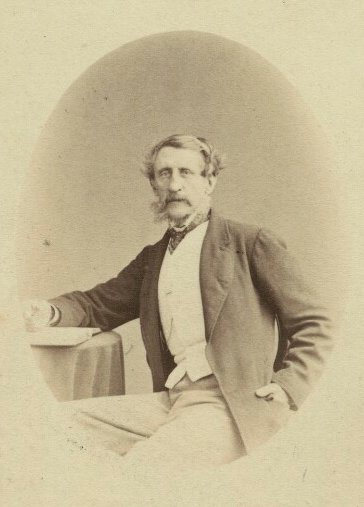Frederick Conyers Cotton on:
[Wikipedia]
[Google]
[Amazon]
 Major General Frederick Conyers Cotton (30 July 1807 – 12 October 1901) was a British army officer who was posted in the
Major General Frederick Conyers Cotton (30 July 1807 – 12 October 1901) was a British army officer who was posted in the
Photo
{{DEFAULTSORT:Cotton, Frederick Conyers 1807 births 1901 deaths British Indian Army officers Companions of the Order of the Star of India People from the Madras Presidency
 Major General Frederick Conyers Cotton (30 July 1807 – 12 October 1901) was a British army officer who was posted in the
Major General Frederick Conyers Cotton (30 July 1807 – 12 October 1901) was a British army officer who was posted in the Madras Presidency
The Madras Presidency, or the Presidency of Fort St. George, also known as Madras Province, was an administrative subdivision (presidency) of British India. At its greatest extent, the presidency included most of southern India, including the ...
. He was among the first to introduce forestry practices into southern India. He collected wild plants in southern India and the genus ''Cottonia
''Cottonia'' is a monotypic genus of flowering plants from the orchid family, Orchidaceae: the only known species is ''Cottonia peduncularis''. It is native to India and Sri Lanka. The genus was erected by Robert Wight and named after Major Frede ...
'' was named after him.
Life and work
Cotton was the son of Henry Calveley Cotton and Matilda Lockwood. He was born inSouthstoke
Southstoke is a small village and Civil parishes in England, civil parish in north east Somerset, England. In 2004 the parish council requested that the name be formally changed to South Stoke, as "this is historically the more established spe ...
, Oxfordshire. His siblings included Arthur Cotton
General Sir Arthur Thomas Cotton (15 May 1803 – 24 July 1899) was a British general and irrigation engineer.
Cotton devoted his life to the construction of irrigation and navigation canals throughout British India. He helped many people by b ...
and Sydney Cotton
Lieutenant-General Sir Sydney John Cotton (2 December 1792 – 19 February 1874) was a British Army officer. He was the commandment of the Moreton Bay penal colony in Australia.
Military career
Born the second son of Henry Calveley Cotton of Wo ...
. He joined the Madras Infantry in 1825. On sick leave he went to the Cape of Good Hope
The Cape of Good Hope ( af, Kaap die Goeie Hoop ) ;''Kaap'' in isolation: pt, Cabo da Boa Esperança is a rocky headland on the Atlantic coast of the Cape Peninsula in South Africa.
A common misconception is that the Cape of Good Hope is t ...
and travelled around southern Africa in Kuruman where he met Robert Moffatt. In 1838 he travelled to Norway, Russia and America. In southern India, he initially worked in the public works department. He served in China during the First Opium War
The First Opium War (), also known as the Opium War or the Anglo-Sino War was a series of military engagements fought between Britain and the Qing dynasty of China between 1839 and 1842. The immediate issue was the Chinese enforcement of the ...
1841–42 and was made a brevet major on the recommendation of his commanding officer Sir Hugh Gough. He became a full major in 1847 and on returning to India he was put in charge of engineering in Malabar and Canara. He was also involved in supervising the irrigation works started by his brother Sir Arthur Cotton in the Godavari. He spent summer in Ootacamund where he had a cottage named ''Woodcot''. He married Mary Cunliffe, daughter of Brooke Cunliffe and Mary Pirrie in 1849 at Galle. He had an interest in gardening and had a greenhouse beside his Ooty cottage. Around 1847 he had noted that timber contractors for the Bombay Dockyard were damaging the forests between Coimbatore and Cochin and suggested that the British government take up management of the forests on their own. This was first put under the command of Cotton and later under Colonel James Michael who worked the Anamalais area. Cotton also examined wild plants and an orchid that he collected and sent to Robert Wight was named after him as ''Cottonia peduncularis
''Cottonia'' is a monotypic genus of flowering plants from the orchid family, Orchidaceae: the only known species is ''Cottonia peduncularis''. It is native to India and Sri Lanka. The genus was erected by Robert Wight and named after Major Frede ...
''. Wight described Cotton as an "an indefatigable collector." Cotton took an interest in plants and in their scientific cultivation. He planted '' Eucalyptus globulus'' trees in 1848 at his Ooty home and at Gayton Park (said to be the oldest Eucalyptus in Ootacamund) which were said to be 150 feet tall in 1908. In 1866 he gave a report on the army stations in southern India, particularly those on the Nilgiris. After retirement he lived in Ealing Green with his wife. He became a vice chairman at the Royal Society of Art and in 1878 he was involved in organizing a congress on the water resources in England. He was made Companion of the Order of the Star of India in 1889. He read widely in natural history but was prevented in later life by poor eyesight.
References
External links
Photo
{{DEFAULTSORT:Cotton, Frederick Conyers 1807 births 1901 deaths British Indian Army officers Companions of the Order of the Star of India People from the Madras Presidency